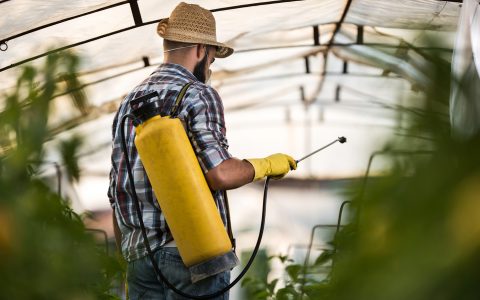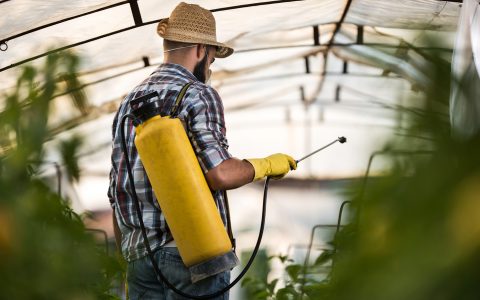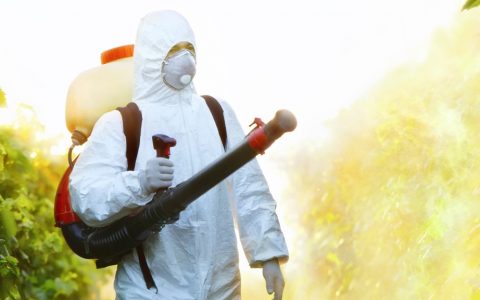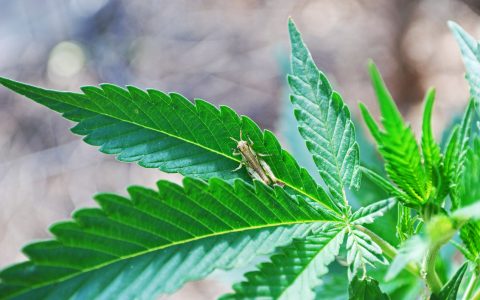Last year, on a Friday afternoon in May, the Government of Canada quietly released some important news. It was changing the approach to testing for unauthorized pesticide use in medical cannabis. Moving forward, it said in a statement, Canada’s licensed producers would be subject to mandatory testing in all cannabis products.
The government had previously deemed this step unnecessary, but months of failed tests and recalls and complaints from a growing chorus of medical patients forced it into action. The impetus: products from seven licensed producers were tested, unannounced, and two producers failed. One leaf sample had traces of peroni butoxide (a synergist which enhances the potency of pesticides) while another contained myclobutanil (a banned pesticide).
Currently, the government’s Pest Management Regulatory Agency (PMRA) has approved of 20 pesticides that can be used on commercial cannabis. This list is not static. Last May, there were 17 registered products. In April of this year, it was updated to 21 products. It has since dropped to 20. The pesticide removed? Monsanto’s Actinovate SP, a fungicide. A government spokesperson said this decision was made because the manufacturer requested Health Canada remove the use on cannabis from the product label. In turn, Health Canada removed Actinovate SP from the list of approved pesticides.
The pesticides that the PMRA has approved are biological in nature—bacteria, fungi, protozoans, bugs that eat other bugs. There are no chemical insecticides approved for use. The culprits that LPs are looking for include thrips, aphids, spider mites, fungus gnats, whiteflies, and more.
Keeping them at bay takes a combination of pest control techniques, says Upeksha Nanayakkara, who works in quality assurance at 7Acres, a subsidiary of Supreme Cannabis. “You can’t just rely on the products that Health Canada has approved,” she says. “None of these products are effective in eliminating a disease or a pest on their own.”
Disease and pest management are critical for licensed producers. Within days, a disease like powdery mildew, which releases spores into the air, can eviscerate an entire grow.
7Acres operates a 340,000 square foot facility on the west shores of Lake Huron, with an annual output of around 11,000 pounds of cannabis. Everything that comes into the facility is screened by Nanayakkara and the quality assurance team. Every member of that team has a science background and Nanayakkara holds a Ph.D. in plant pathology. She entered the cannabis industry after several years of working on integrated pest management with other crops—tomatoes, potatoes, cucumbers. Similar concepts apply to cannabis, she says. “It’s just a high-value crop, that’s the difference.”
Because of that, disease and pest management are critical for licensed producers. Within days, a disease like powdery mildew, which releases spores into the air, can eviscerate an entire grow, resulting in a cull and a huge monetary loss. “If you didn’t have any of the preventive mechanisms in place then before you know it, within two to three days, it can infect all your plants,” Nanayakkara says. “It can be devastating at times.”
“These diseases and pests, you can’t take them lightly.”
Cleanliness Is Key
At 7Acres, the pest control measures start at the door. The facility is zoned and the entrance, Zone 1, is considered a contaminated area as humans carry things—including pests!—on their bodies. To get past Zone 1, you have to change into the provided lab coats and hair coverings and booties. Everything that enters the facility is screened, even the grow base.
7Acres uses coco coir, made from the long, coarse fibers on the outside of a coconut. It has gained popularity in recent years for its triumvirate of excellent water retention, drainage, and aeration but it is also free of fungal spores and pathogens. Testing it is still necessary, though, Nanayakkara says. “Some of those materials may have been manufactured in other countries so we test for any residues of pesticides,” she says. “That way we know, going into production, that none of the material we use has even traces of pesticides.”
The mother rooms are highly restricted areas, with zero tolerance for pests or diseases. “If you start with infected material then you’re going to have disease and pests in all of your grow,” Nanayakkara says. The philosophy is to “start clean and finish cleaner.” The rooms are cleaned and inspected on a rotating schedule as any material left behind has the potential to become a pest site. A dedicated team monitors each plant for symptoms of disease or pests.
Data, collected from the rooms and individual plants, is used to determine whether any interventions need to be made, like increasing the rate of beneficial organisms, the biocontrols, or pulling back on watering if the plants are waterlogged.
Nanayakkara says 7Acres uses about three or four of the PMRA approved products and applies beneficial organisms every two to three weeks. “We know the products that work well for us,” she says. “We use them sparingly but we still have them in place.”
The beneficial organisms, which come from several different suppliers, are applied loosely until the plants are moved to the flowering room. Once there, 7Acres switches to boxes or sachets that are hung on the plant. Loose applications, in the flowering stage, can result in carrier material from the biocontrols getting stuck to the grow. For example, a popular predatory bug for treating spider mites is persimilis, which arrives in a sawdust carrier. “If you’re in flower, if you get one grain of sawdust in the bud, that bud is going into the garbage because it’s not going to pass QC,” says Kevin Cullum, the Canadian Technical Manager for Koppert Biological Systems. (Koppert, which is headquartered in the Netherlands and has been working with the cannabis industry since the 1990s, developed foil sachets specifically for use in cannabis. Foil, as opposed to paper, can better withstand climate of a grow room, with the low humidity and strong air circulation.) One week prior to harvest, the sachets and boxes are removed.
The most important thing, Nanayakkara says, is having preventive measures in place if things start to go awry. Planning and managing the grow, identifying pests, monitoring their populations, making decisions about potential damages and costs and evaluating the efficiency of those decisions, are all considerations that need to be made.
The expertise comes in learning how to use the products before an infestation or disease has started. “The label gives the general guidelines, but you want to start preemptively as opposed to when you already have a disease or pest,” Nanayakkara says. “There are few products on that list that I’m pretty partial to because I know they work—and you need to know how to work with them.”
Biocontrols Seen as the Safer Alternative
Knowledge about diseases, pests and pest controls like everything else in the emerging industry, is still evolving. “When I joined the industry in 2015, that level of awareness was not there,” Nanayakkara says. “It was not very clear to the growers, so some of them actually used the products that are permitted in other crops but not for cannabis.” And while that has changed, there is still much to be discovered. There is little scientific data about the interactions between pesticides, combustion, and inhalation, for example.
Biocontrols are seen as safe since they are natural, but they are also effective. They live in the plant, so they last longer than pesticides, and pests can’t develop a resistance to them. But there are other challenges—like learning how to deal with previously unencountered pests.
Koppert is the largest biocontrol producer in the world but until recently, they had never had to deal with root aphids, which are hard to spot, multiply quickly, and can kill a plant. “All of the biocontrols and strategies that we have are based around the main crop pests—peppers, tomatoes, cucumbers, flowers,” says Cullum. “Not one of those crops get root aphids. It’s a brand new thing to wrap your head around, how to control something like that.”
Other challenges for biocontrols include the grow rooms themselves. The high airflow can dry out the plants and make them less appetizing for the organisms. Lighting can also be an issue. As can the terpenes in the plant, which act as a natural resistance to insects and fungi. “By default, a lot of the biocontrols don’t like cannabis that much because they don’t like terpenes,” Callum says.
Beyond new bugs, there are other things to watch for. “We don’t even know, at this point, all of the potential diseases for cannabis,” Nanayakkara says. “We know a few very serious ones but there could be more. We are still learning.”
Pest Control Tips for Home Growers from a Plant Pathologist
- Never take any pests or disease lightly
- Whether you have four plants or 4,000, a clean start is key
- Monitor your plants and inspect them daily
- Have biological pest controls on hand and know how to use them
- Experiment with different techniques and learn what works best for you
- If you spot insects on your grow, carefully remove them and use beneficial organisms
- If it’s a disease you have to act quickly. If it’s a serious disease, like powdery mildew, it may be necessary to cull the grow and start again with clean material














